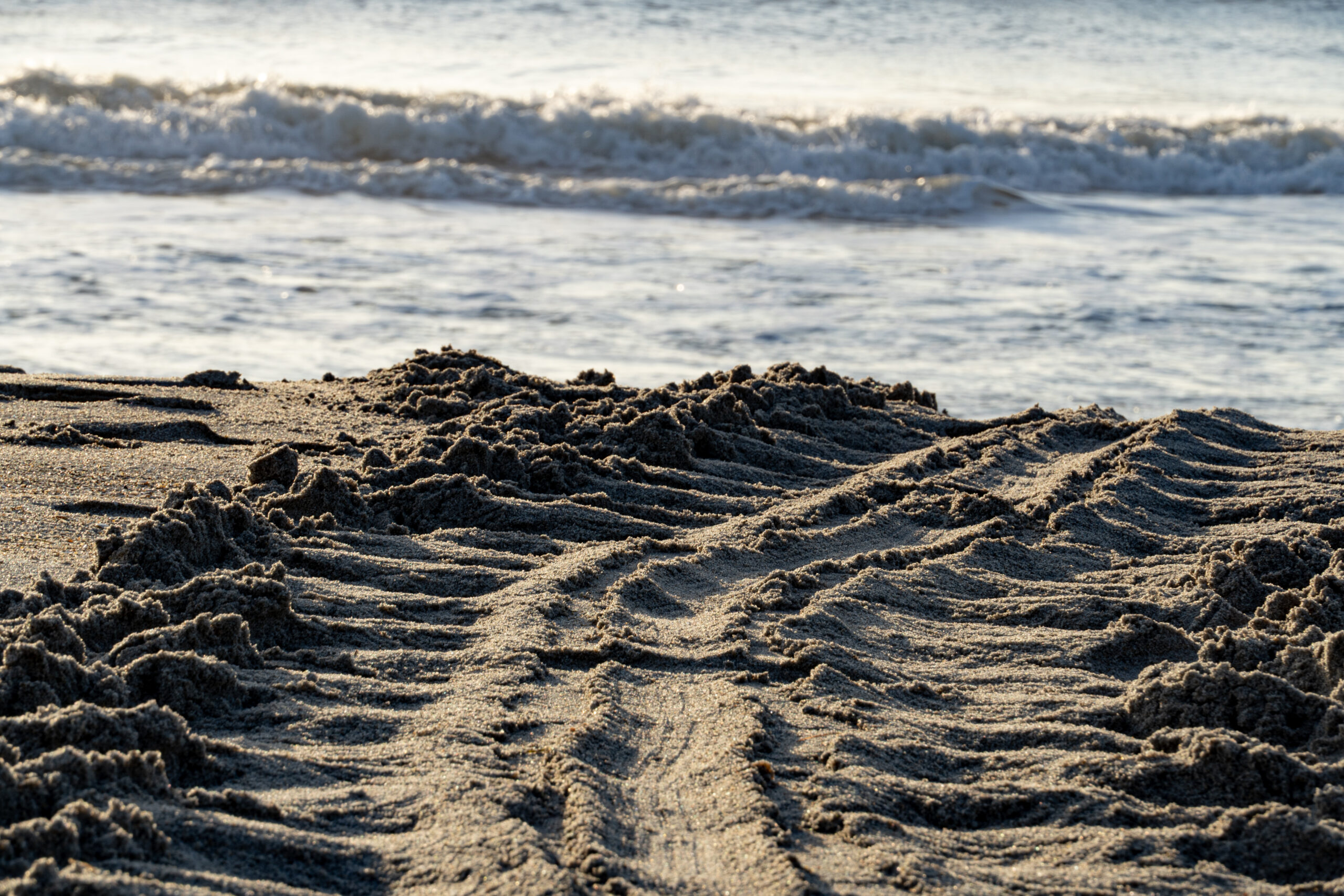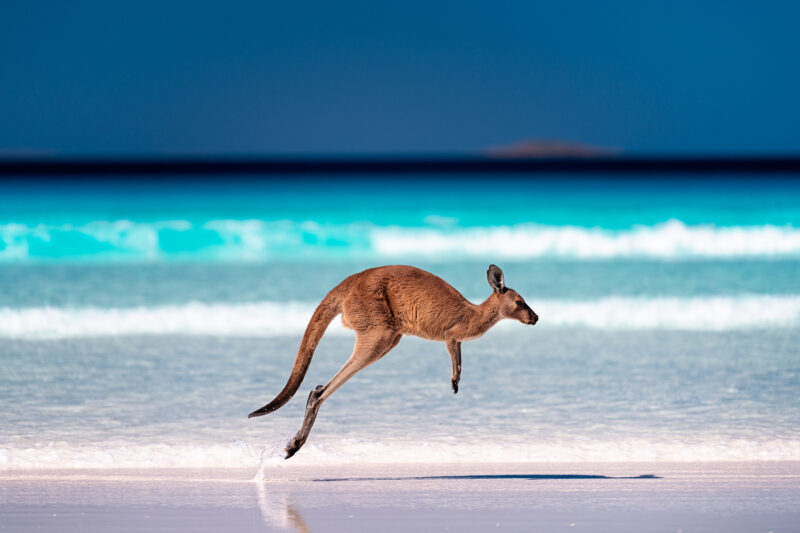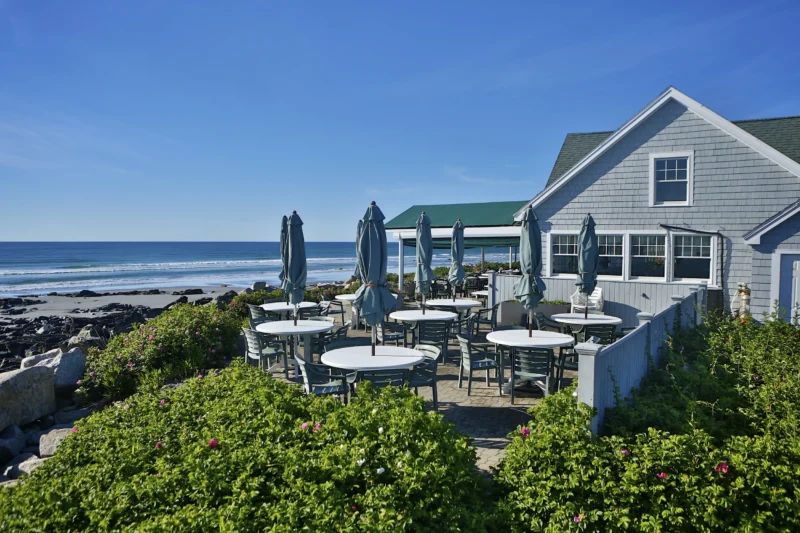There I was—standing on the beach in the pitch black darkness. I looked over at my friend Wendy, but I couldn’t see a thing. Then, my eyes somehow started to adjust. The light of the moon and stars overhead became my guiding light. That was the moment I felt the true connection to the magnificent creature I would soon be interacting with. She too relied on that same light to fulfill her ritualistic mission—and I was about to become one of the few to witness it. Seeing a sea turtle nest on the beach is one of the most magical things I’ve experienced during my years of living in Florida, yet there’s no selfie to prove it.
The Significance of the Archie Carr National Wildlife Refuge
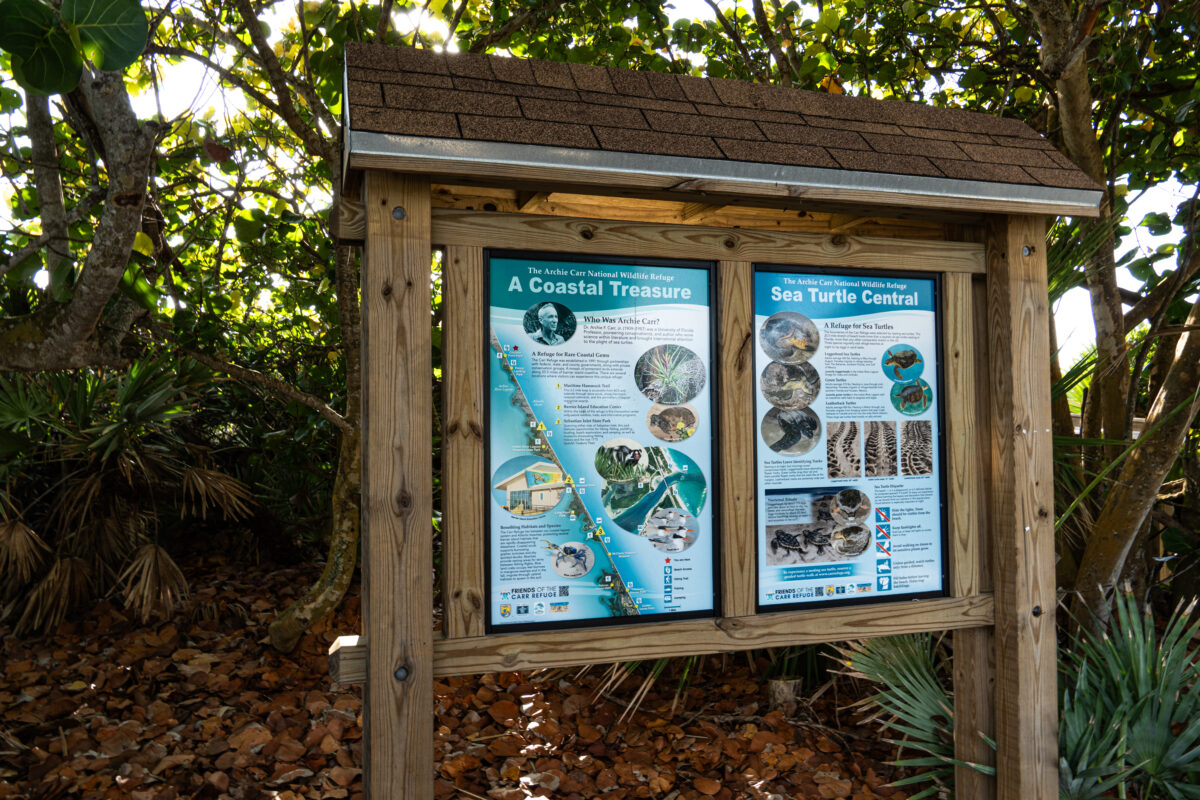
Every summer, something extraordinary happens on Florida’s Melbourne Beach. It makes up the northern section of the Archie Carr National Wildlife Refuge—the world’s #1 nesting site for loggerhead sea turtles. The refuge stretches for 20 miles down to Vero Beach and plays a key role in protecting these endangered creatures. It’s not uncommon for green and leatherback sea turtles to claim their nesting spots there too.
While this is a spectacular thing to see, there’s a right way and a wrong way to do it. If you do it correctly, you’ll leave with memories of the most amazing experience. If you do it incorrectly, you could interfere with nature’s processes, prevent a turtle from nesting and may even leave with a ticket.
How to See Sea Turtles Nesting on Melbourne Beach
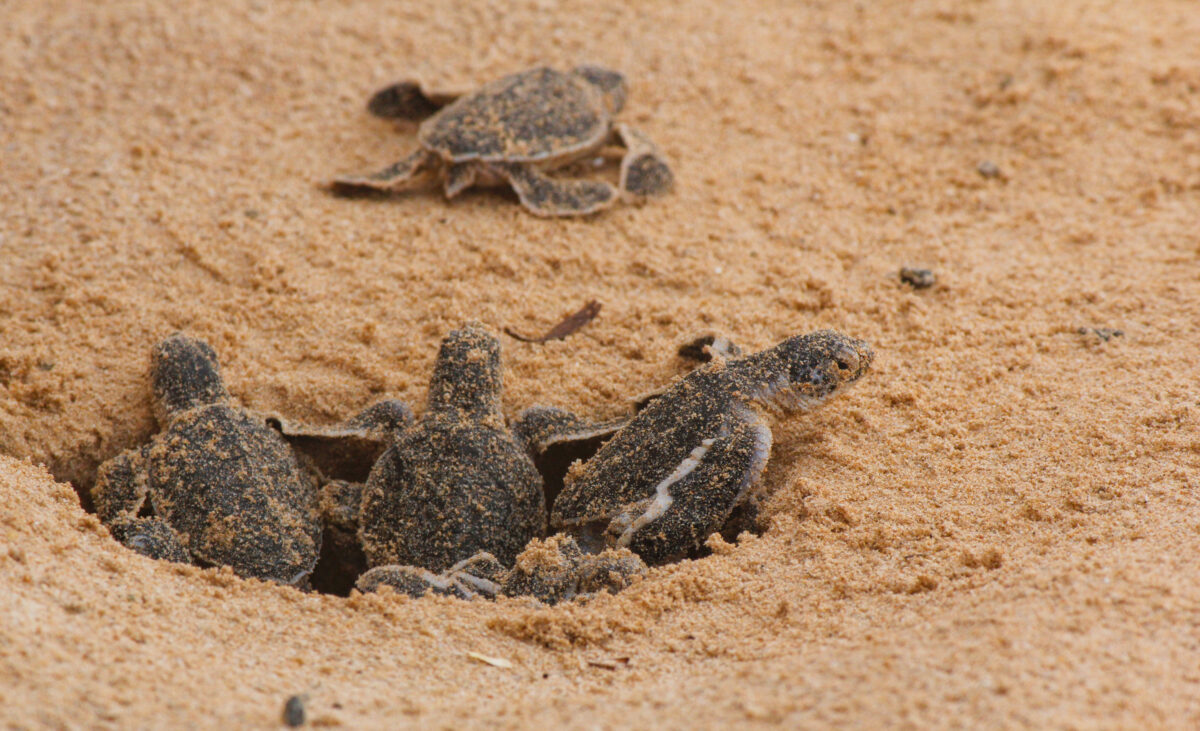
I’m so glad that I was able to see this, but I would never have tried to do this on my own. It can be dangerous to be on the beach at night—for you and the nesting turtles. In the darkness, it can be easy to trip over holes, driftwood, or even a hatchling. There are also ordinances in place to protect the endangered sea turtles and you can be ticketed if you interfere with their nesting. Perhaps worst of all though, you may stop a nesting female sea turtle from laying her eggs and that’s just not cool.
Even though you don’t want to go searching on your own, you can do something better. Stella Maris Environmental Research is a 501(c)(3) non-profit that conducts research studies in Melbourne Beach, and they invite up to 20 people to join them for sea turtle walks on select nights each June and July. They have a permit that allows them to be able to view this experience up-close and personal, and you can come along for the ride. You can never guarantee anything with nature, but with the thousands of loggerhead sea turtles using the refuge as their nesting ground, combined with the expertise of their marine biologists, you do have a 99.99% chance of seeing one if you go on a sea turtle walk with Stella Maris Environmental Research.
What to Expect From Your Guided Sea Turtle Night Walk
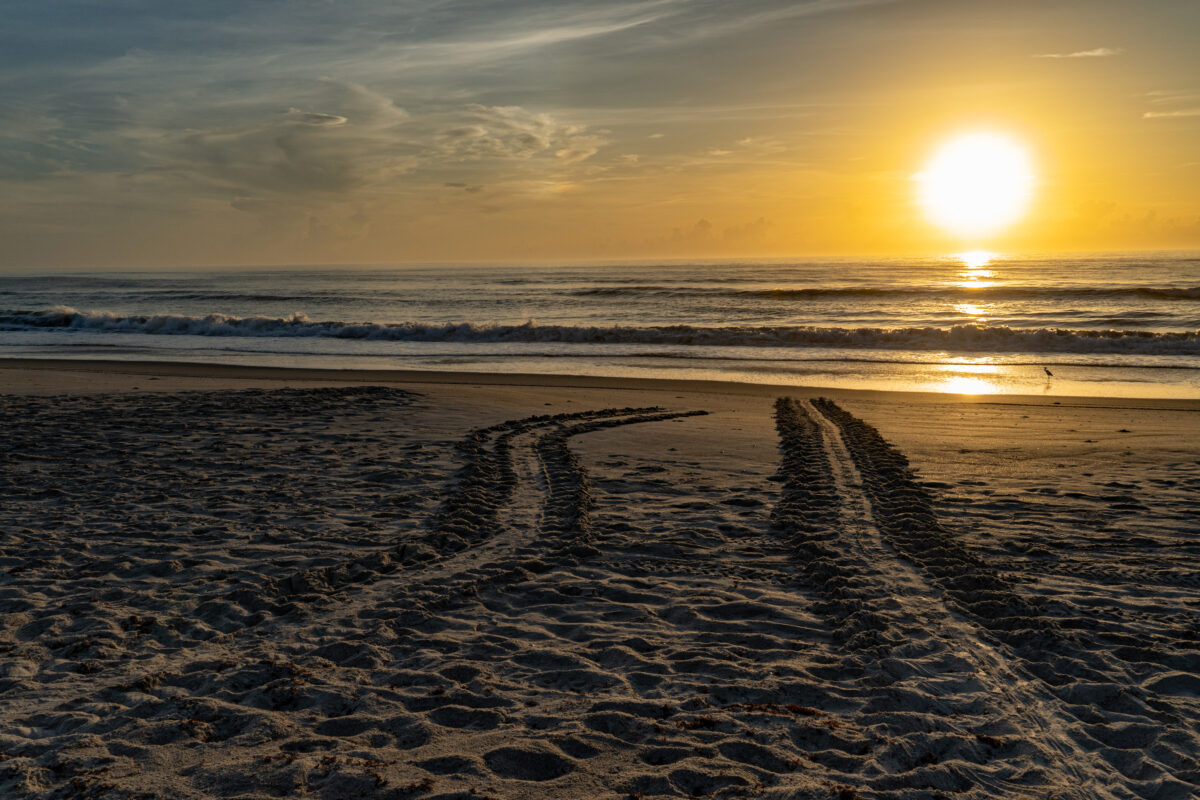
The experience starts with a short educational presentation in the parking lot where marine biologists teach you interesting facts about sea turtles. I enjoyed the presentation, but I have to admit, I was super excited when the presenter got interrupted by a call on her walkie talkie. She had already prepared us for what that meant.
While the presentation is happening, spotters are walking the beach in search of a nesting loggerhead sea turtle. Once one has been spotted, and it’s in the perfect stage of nesting, they jump on the walkie talkies to let us know it’s time. You never know how long it will take for the spotter to find a turtle, but when I went on the walk, it took about 30 minutes. A green turtle was spotted first, but we needed to wait for a loggerhead since they are the only turtles that are allowed to be viewed on a guided turtle walk. Like other sea turtles, they are an endangered species, but they aren’t as endangered as others.
The group then departs on foot to walk to meet up with the spotter and nesting turtle. This is when the magic happens. You’ll get the chance to see inside the world of nature in a way that many people will never see, thanks to the credentials of Stella Maris Environmental Research. You’ll get much closer than you would ever be allowed to do on your own and you’ll see her laying eggs, covering them and then making her trek back to the ocean’s depths. To step out outside of your everyday world and experience pure, raw nature in that way—from that close—will be something you’ll never forget. Each turtle on Stella Maris’ walking tours gets a name and our group decided to call ours Eve.
The next day I received an email with photos of our beautiful Eve. Cameras and cell phones aren’t allowed on the walks, since those emit artificial light. However, the non-profit organization is permitted to carry special night vision binoculars that can take photos. When I was on the beach with Eve, it was as if time stood still. I wouldn’t have wanted my phone or camera with me anyway because I was so caught up in the moment, but I’m so stoked to be able to have a memento from this special night to remember Eve. There’s no extra charge for this and it was an exciting surprise.
Things to Know Before Your Guided Sea Turtle Walk
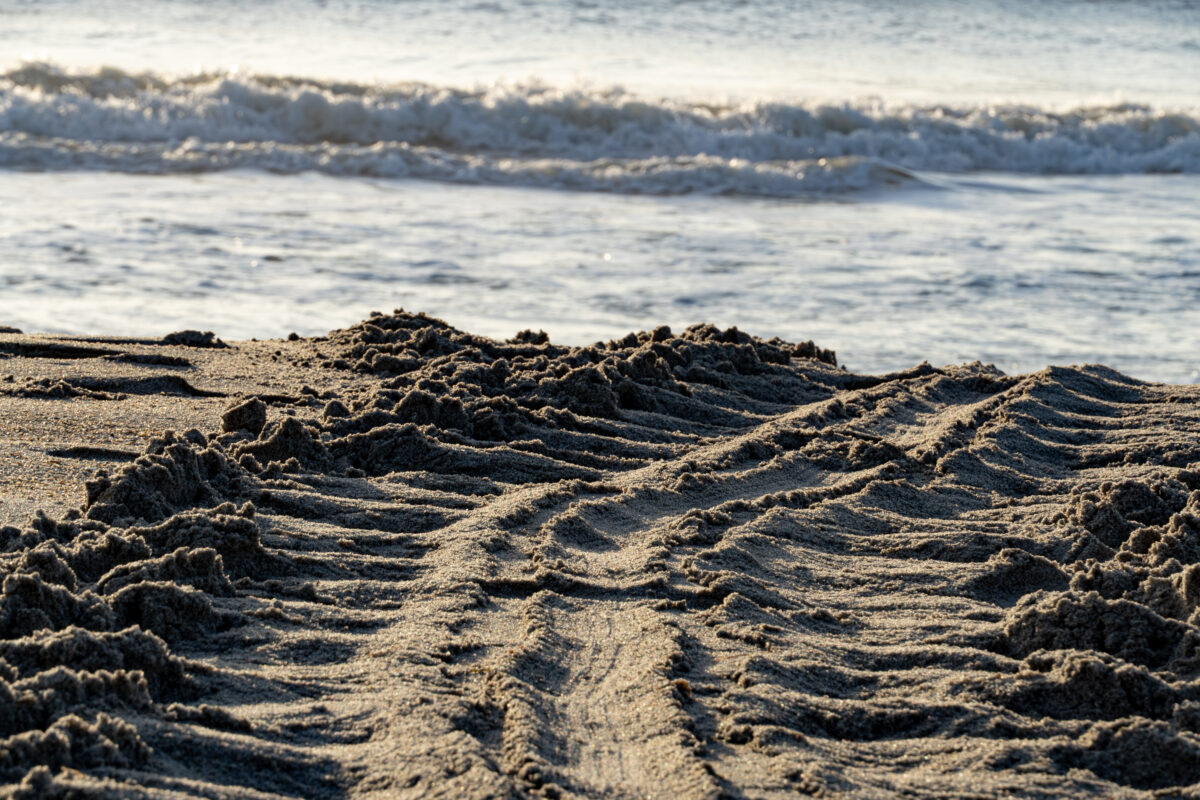
- The tour costs $20 and you can make your reservation online. Book early since they only take 20 people on each walk and tours can sell out.
- It is going to be dark on the beach (really dark). Your eyes will adjust after a few minutes though.
- Things to bring: bug spray and water
- Things not to bring: flashlights and cell phones (These emit artificial light that isn’t allowed on the beach).
- Wear lightweight pants and long sleeves. Dark or sandy-colored is best.
- Be prepared to walk up to ½ mile if needed.
- Children under 7 are not allowed.
- Prepare to be out late. You’re on turtle time and the tour could last until 1 a.m.
The Rules of Sea Turtle Nesting Season in Melbourne Beach
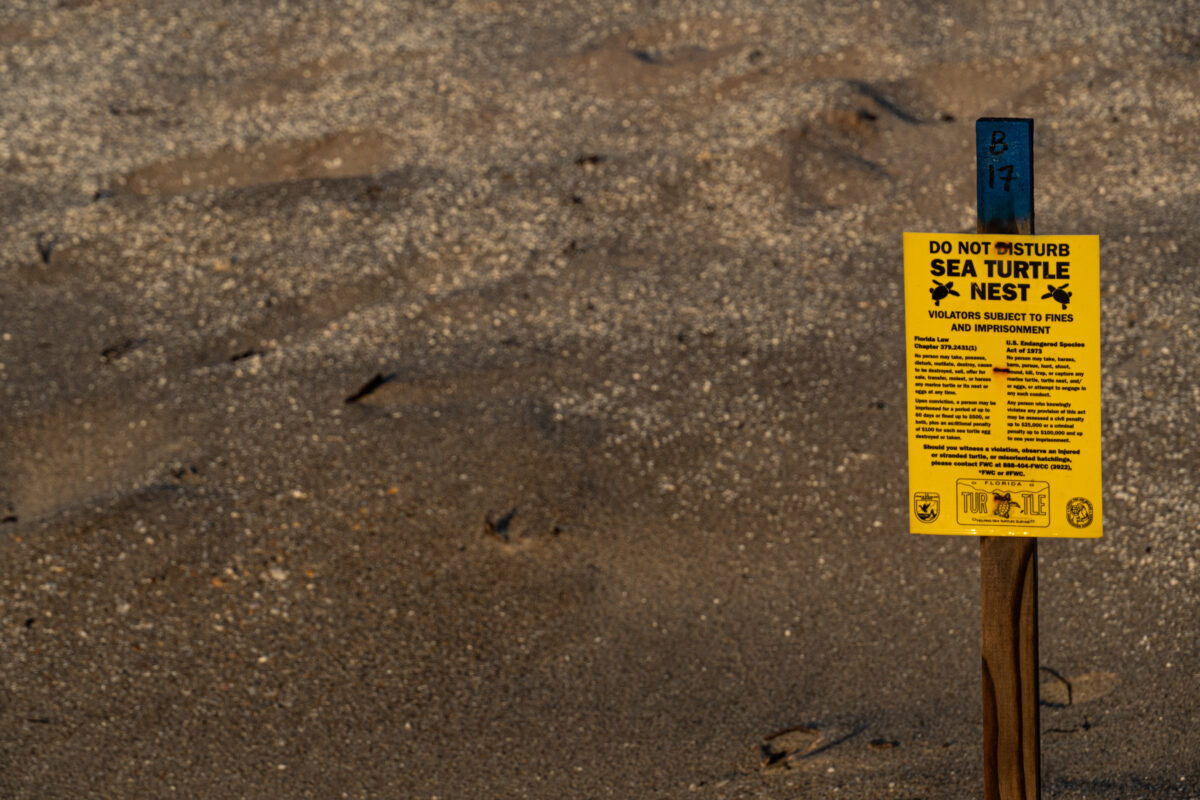
The light of the moon and stars is the only light that needs to be shining down on the shores of Melbourne Beach at night, as artificial lighting is the number one cause of habitat breakdown for sea turtles. Hatchlings are attracted to light and nesting females are deterred by it. Nesting females can become disoriented and won’t lay eggs. Hatchlings will die going towards the light instead of towards the ocean. Because of this, there are ordinances in place and it’s illegal to have artificial light that can be seen from the beach during nesting season.
Nesting season in Melbourne Beach is officially May 1-October 31, but some turtles have been known to start their nesting ritual a little earlier. Starting in March, you’ll want to make sure you don’t take any lights on the beach at night. Ashley Chelberg is the President of Stella Maris Environmental Research and she says you need to pay attention to the lighting rules even if you don’t take a nighttime walk on the beach. “If you’re in a condo by the beach, make sure the lights are out, or the shades are drawn after 9 p.m.” She also shared, “If you’re traveling around your property that’s by the ocean, you should always use a red light during sea turtle nesting season—but you should not ever take red lights on the beach. Those are still artificial lights.”
The ordinance says there is no artificial light allowed on the beach during nesting season—not even red lights. If you’re caught on the beach at night with lights, you can get a ticket. Also make sure you don’t leave anything on the beach. Things like beach chairs can become obstacles for sea turtles and they can become stuck.
Chelberg cautions about going down to the beach at night unless you’re on a group tour. It is illegal to disrupt the nesting experience for a female turtle and even if it’s completely unintentional, it can happen. She said, “If you’re too close, and you accidentally block her, or you’re in her eyesight, you could cause her to not lay her eggs.”
We all want to do the right thing, but sometimes we don’t completely understand the dynamics of nature and how our actions correlate with it. I personally learned so much when I did the sea turtle walk with Stella Maris Environmental Research and I’m now more aware of my actions. While some nests are marked on the beach, there are so many that aren’t. During sea turtle nesting season, it’s important to make sure you don’t dig in the sand or push umbrellas into the ground on Melbourne Beach, as there could be a nest right under the sand.
After my night with Eve, I’ve now found a new appreciation for not only sea turtles, but also for the people working hard to protect them, and for all of the life cycles that make up our beaches. During sea turtle nesting season, I also love going out on Melbourne Beach in the morning because you can see all of the turtle tracks from the previous night. It is such a beautiful sight.

